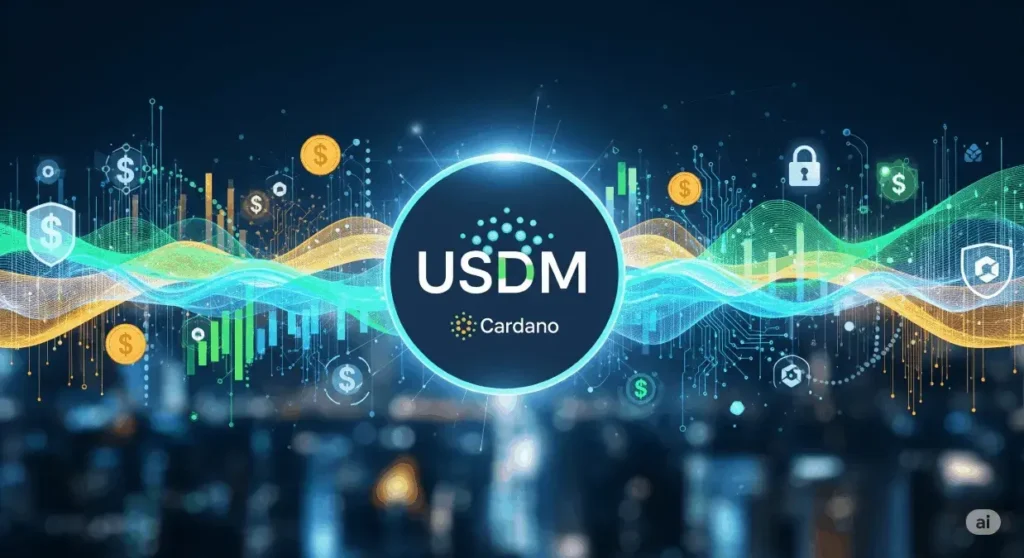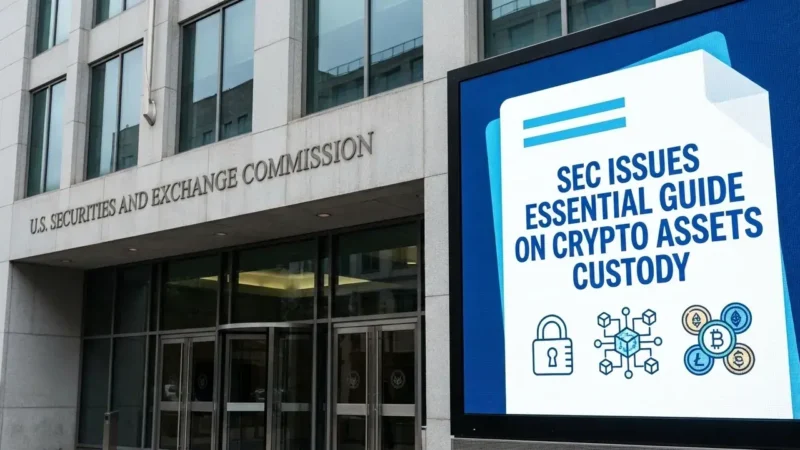Cardano’s stablecoin USDM: A Next-Generation Stablecoin Poised for Mass Adoption

The stablecoin landscape is evolving at a breakneck pace, with new contenders challenging the dominance of established players. While market giants like USDC and USDT have built massive ecosystems, a new wave of innovation is focusing on a crucial, often overlooked, aspect: privacy and enterprise-grade compliance. At the forefront of this movement is Cardano co-founder Charles Hoskinson, who has been a vocal proponent for a new type of digital currency, recently lauding the unique capabilities of the new stablecoin USDM. According to Hoskinson, this asset is on the cusp of becoming the most advanced stablecoin ever built, a bold claim that is supported by its groundbreaking architecture and strategic positioning.
Hoskinson’s enthusiastic endorsement of stablecoin USDM is not a spontaneous declaration. It stems from a long-standing concern about the relatively low stablecoin liquidity within Cardano’s burgeoning Decentralized Finance (DeFi) ecosystem. As many in the community have pointed out, the stablecoin market capitalization to total DeFi Total Value Locked (TVL) ratio on Cardano was recently around 9.6%, a stark contrast to the likes of Ethereum (195%) and Solana (125%). This liquidity vacuum has been a significant bottleneck for the network’s growth, and Hoskinson has been actively seeking solutions. In a bid to jumpstart the ecosystem, he has even proposed a bold plan to convert a substantial portion of the Cardano treasury—140 million ADA, valued at approximately $100 million at the time—into stablecoin USDM. While this proposal has sparked debate within the community regarding potential market impact, it underscores the gravity of the situation and the critical importance of a robust, native stablecoin.
Privacy, Compliance, and the Enterprise Advantage
The core of Hoskinson’s argument for stablecoin USDM’s superiority lies in its advanced architecture, which is designed to bridge the gap between traditional finance (TradFi) and the world of decentralized digital assets. Traditional public stablecoins, while transparent, often fall short of meeting the stringent privacy and compliance requirements of enterprises, governments, and institutional clients. Every transaction on public ledgers is, by design, publicly accessible, which is a non-starter for many real-world use cases, such as corporate payroll, private remittances, or the payment of sensitive bills.
This is where stablecoin USDM and its unique capabilities come into play. Andrew Westberg, CTO at W3i and a prominent figure in the Cardano ecosystem, has offered a detailed breakdown of how a privacy-enabled stablecoin can meet these complex requirements. He paints a picture of a system where a person can pay a government water bill, with the public data being anonymous, while the underlying private transaction remains confidential. Similarly, a remittance can be kept private, with only a verifiable proof that the receiver is not in a sanctioned country being disclosed. This “selective disclosure” is a powerful concept that allows for the best of both worlds: the efficiency and transparency of a public ledger, combined with the confidentiality of a private financial system. Westberg argues that this next-generation approach could truly replace the Traditional Finance (TradFi) system for the first time, addressing a fundamental limitation that has held back the wider adoption of crypto for institutional use.
The Technology Behind the Vision: Midnight and Moneta Digital
The technology enabling this vision is a two-pronged approach involving a unique partnership between Moneta Digital, the issuer of stablecoin USDM, and Cardano’s privacy-focused sidechain, Midnight. The development of a privacy-preserving stablecoin for the Midnight sidechain is a key part of this strategy. Midnight is a zero-knowledge (“rational privacy”) network that allows developers to program selective disclosure and meet regulatory obligations while shielding sensitive information like transaction amounts and counterparties. The “selective disclosure and season freeze regime,” as previously proposed by Hoskinson, is a core tenet of this initiative.
The Midnight sidechain’s design is a testament to this commitment. It’s built to allow data to be kept confidential by default but also to be verified and disclosed in legitimate situations, such as with a court order. This is a crucial distinction from privacy-centric chains that offer complete anonymity, which often puts them at odds with regulatory bodies. By embracing a model of “programmable data protection,” Cardano and Moneta Digital are creating an environment where enterprises can build applications that handle sensitive information with confidence, knowing they can remain compliant with global regulations. While branding and product details for the Midnight-native stablecoin are still in flux, the direction is clear: to offer a fiat-backed dollar with granular permissions that lives natively on a privacy chain and can interoperate with public ledgers.
Building a Global Bridge: The Argentina Connection
The importance of this enterprise-focused approach is exemplified by Cardano’s strategic partnerships in regions where stablecoins are becoming an essential part of the everyday economy. The ongoing collaboration with the Argentine province of Entre Ríos, which has been extensively covered by publications, is a prime example. The workshop in Buenos Aires, where Hoskinson hinted at “making progress on the first private stablecoin,” highlights the tangible nature of these efforts. Argentina, with its high inflation and growing need for a reliable medium of exchange, is a fertile ground for stablecoin adoption. Andrew Westberg’s observation that the stablecoin discussion in Argentina is “a small but important piece” of a much larger and more complex puzzle perfectly illustrates the need for a solution that goes beyond a simple pegged token. This is not just about a stable store of value; it’s about building a digital financial infrastructure that can handle the intricacies of modern commerce, from government payrolls to international trade, all with an emphasis on privacy and compliance.
The Current State and Future Potential of stablecoin USDM
While the ambitions for stablecoin USDM are vast, its current footprint reflects its relative infancy compared to market leaders. With a market capitalization of $152 million and around 38,000 wallet holders, it is a small player compared to Circle’s USDC, which boasts a market cap of over $63 billion. Moreover, USDM’s deployment is currently concentrated on networks beyond its native Cardano, including Ethereum, Polygon, and Arbitrum. This multi-chain presence is a smart strategy to build liquidity and adoption, but the true value of its unique architecture will be realized when it is fully integrated into the Cardano ecosystem, especially through the Midnight sidechain.
The competition is fierce, and the stablecoin market is dominated by players who have had a significant head start. However, the long-term forecasts for the stablecoin market are incredibly optimistic. Citi, a leading global financial institution, has predicted that the market could reach a staggering market cap of $3.7 trillion in five years, signaling a future where stablecoins are widely adopted for payments, remittances, and tokenized assets. This immense growth potential provides a clear runway for a new, differentiated stablecoin to capture a significant market share, especially if it can solve the problems that public stablecoins cannot. By focusing on a niche that is both crucial and underserved—the intersection of privacy, compliance, and enterprise-level use cases—Cardano and its partners are positioning stablecoin USDM to be a leader in the next phase of stablecoin evolution.
Stay informed, read the latest crypto news in real time!
In conclusion, Charles Hoskinson’s claim is more than just marketing; it is a statement of intent. The vision for stablecoin USDM is not to simply replicate what others have already built, but to create a new category of digital currency that is capable of truly integrating with the global economy. By prioritizing features that are essential for institutional and governmental adoption, Cardano is laying the groundwork for a future where a new kind of stablecoin can flourish, proving that innovation in the crypto space is far from over.





One thought on “Cardano’s stablecoin USDM: A Next-Generation Stablecoin Poised for Mass Adoption”